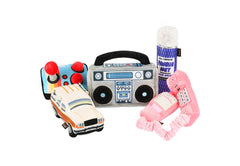Are you wondering how to provide your cat with the best nutrition possible?
Here we discuss everything you’ll need to know about your cat’s nutrition. We’ll talk about the nutrients that your cat needs and how to feed your cat best.
Let’s get started.
What Should Cats Eat?
Cats have dietary needs that are very different from what humans need. Cats are what’s called obligate carnivores. This means that in nature, cat’s don’t require anything other than meat to satisfy their nutritional requirements.
But that doesn’t mean that you should just feed your cat raw meat (gross). It means that cats can and should consume different macronutrients than what humans need.
There are three types of macronutrients: proteins, carbohydrates, and fats. Here’s a breakdown of each of these:
- Proteins: Proteins are the main macronutrient that cats need to survive. Proteins serve as the building block of body tissue and are used to regenerate muscle stronger than ever. Each gram of protein contains 4 calories.
- Carbohydrates: Carbohydrates (carbs) don’t deserve the bad rap that they get. Carbs carry lots of useful nutrients for your kitty, but should be a minor part of his or her diet. Each gram of carbs contains 4 calories.
- Fats: Fats sound a lot worse than they are. Since cats are meat eaters in the wild, they can handle quite a bit more fats than humans can. Each gram of fat has 9 calories, so you don’t need as many of these as proteins or carbs.
Cats need a larger portion of protein and fats than humans do. This isn’t too hard in the wild since most of their food is meat.
In modern life, getting that balance right can be tough.
We recommend checking any cat food for amount of crude protein. As long as your cat doesn’t have any special dietary needs, we recommend looking for cat food with at least 30% protein.
If possible, a high protein food is even better. We like foods in the range of 35-40%+ protein if possible.
Be on the lookout for “ash” in your cat’s food. This content is pure filler and doesn’t solve your cat’s nutritional needs at all. Corn, wheat, and soy are other common ingredients that don’t solve your cat’s dietary needs and can be harmful if your cat has allergies.
These are “filler” foods that help keep costs down, but they don’t add much value as far as your cat’s nutrition goes.
How To Best Feed Your Cat
Now that we know what cats can eat, let’s take a look at how to best feed your cat.
First, we recommend starting with “free feeding”. This means that once per day, you fill your cat’s food bowl. You allow him or her to eat as often as desired.
But free feeding isn’t the best pick for every cat. Some cats start to gain weight since they have trouble eating the right portions (they’re a lot like humans in that way). If you notice your free-feeding critter starting to pack on the pounds, we recommend feeding him or her at designated times throughout the day.
Your cat will learn to expect breakfast, lunch, and dinner but won’t understand if the food is late. Be sure to keep the meal times as consistent as possible
The second thing we recommend is to switch to a wet cat food for your cat. Wet cat food costs a bit more than dry food, but it’s better for your cat.
Wet cat food almost always has higher protein than dry food, so we’re all for that. But wet cat food also helps your cat stay hydrated.
Cats aren’t great about drinking water (and are even worse about drinking still water). In the wild, almost all their water comes from the meat they consume. House cats are best hydrated from wet food and a better hydrated cat is healthier overall.
Food Problems
We know what cats should eat and how to give it to them. But what if your cat won’t eat it?
Or worse, what if he or she starts vomiting the new food up?
We recommend starting slow with the new food. For a few days, mix in about 25% of the new food with 75% of the old food. This helps your cat get accustomed to the flavor change (and that means he or she won’t pitch as big of a fit when the new food is all there is). As time goes on, start adding more and more of the new food. Go to 50% of old and new, then 75% new until you’re just using the new food.
There’s no hard and fast limit, but the longer you spend doing this, the less problems you’ll have with an angry cat. We recommend spending a day or two at 25%, 50%, and 75% each.
If your cat is vomiting, we recommend trying a specific cat food for sensitive stomachs. These cat foods contain ingredients and nutrients to help your cat keep food down.
Conclusion
Thanks for reading! Let us know in the comments below: how do you feed your cat?






